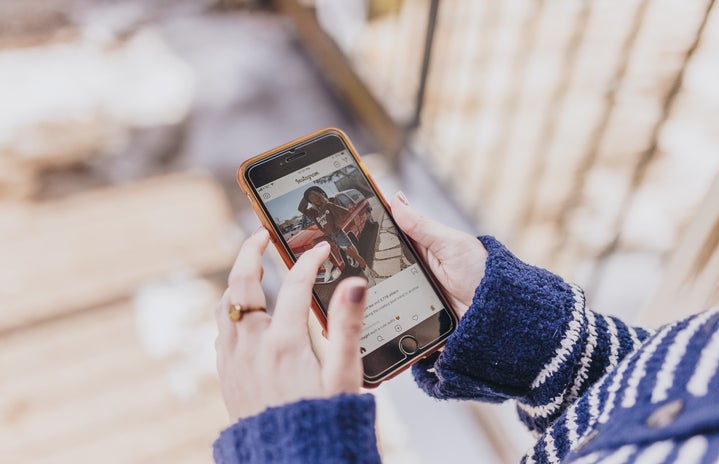Posting on Instagram may be one of the only things that was actually easier to do in middle school. I got an Instagram the summer before sixth grade and I recall posting photos on the app every single day, sometimes even multiple times a day. I would get home from seventh grade, snap a now cringe-worthy selfie, slap a hyper-saturated filter on it, and upload it to my 50 followers. I would repost countless photos of One Direction and dozens of memes. Every time I hung out with a friend or reunited with a family member, the occasion called for an Instagram post. Eventually, I amassed over a thousand photos on my profile. The thought of having that many images on my profile today is laughable to say the least.
Flash forward to a few days ago, I was sitting on the porch with my sisters on a cool spring evening. The sun was beginning to set, and a wash of light pink began spreading across the sky. My younger sisters hopped off of their seats and began snapping photos of themselves smiling in front of the setting sun, presumably to post on social media. I decided to join them, passing them my phone and posing in front of the sunset. When I looked at the photos they took of me, I was sorely disappointed. Instead of focusing on the beautiful rosy sky or my joyful expression, all of my insecurities jumped out at me. I began stressing about parts of myself I wasn’t even self-conscious about before viewing the photos. The stress was enough to put me in a relatively bad mood for the next hour or so. Needless to say, I was not going to be sharing these photos on social media.
When I was an 11-year-old, it was so easy to take a simple photo of myself and upload it on Instagram without thinking twice. Today, at 20 years old, I find myself intensely scrutinizing every photo before I upload it online. I search for every hair out of place, every blemish that could be showing, and make sure that the colors in the photo match the others in my “feed.” How did this change happen?

This transition in my social media habits occurred because of my preoccupation with what others think of me. As a woman, I’ve been conditioned into thinking that how I look and how others perceive me is of the utmost significance in my life. Before this realization, it was much simpler to just be the person I wanted to be without concerning myself with the opinions of others. This situation is obviously much bigger than simply posting photos on social media. Obsessing over what others think of you can have grave impacts, as it can cause you to censor the parts of yourself that you love most.
Rectifying this dysfunctional mindset isn’t easy, but it can begin with realizing that people probably aren’t paying as much attention to you as you think. We know our own bodies and minds better than anyone else. When we look in the mirrors, we’re quick to see the parts of ourselves that we don’t like because we’re constantly confronting them. However, to others, these parts aren’t nearly as prominent. Consider how you perceive people when you meet them for the first time. Chances are that you don’t point out all the parts of them you don’t like, but rather you see the good parts of them more immediately. The same goes for those that meet you.
Freeing ourselves of the preoccupation with how we look and how others perceive us is easier said than done. But realizing that people aren’t scrutinizing you the way you scrutinize yourself is a step in the right direction. We are our own harshest critics, but there’s no reason to be. Embrace all parts of yourself the way you would embrace a friend.


